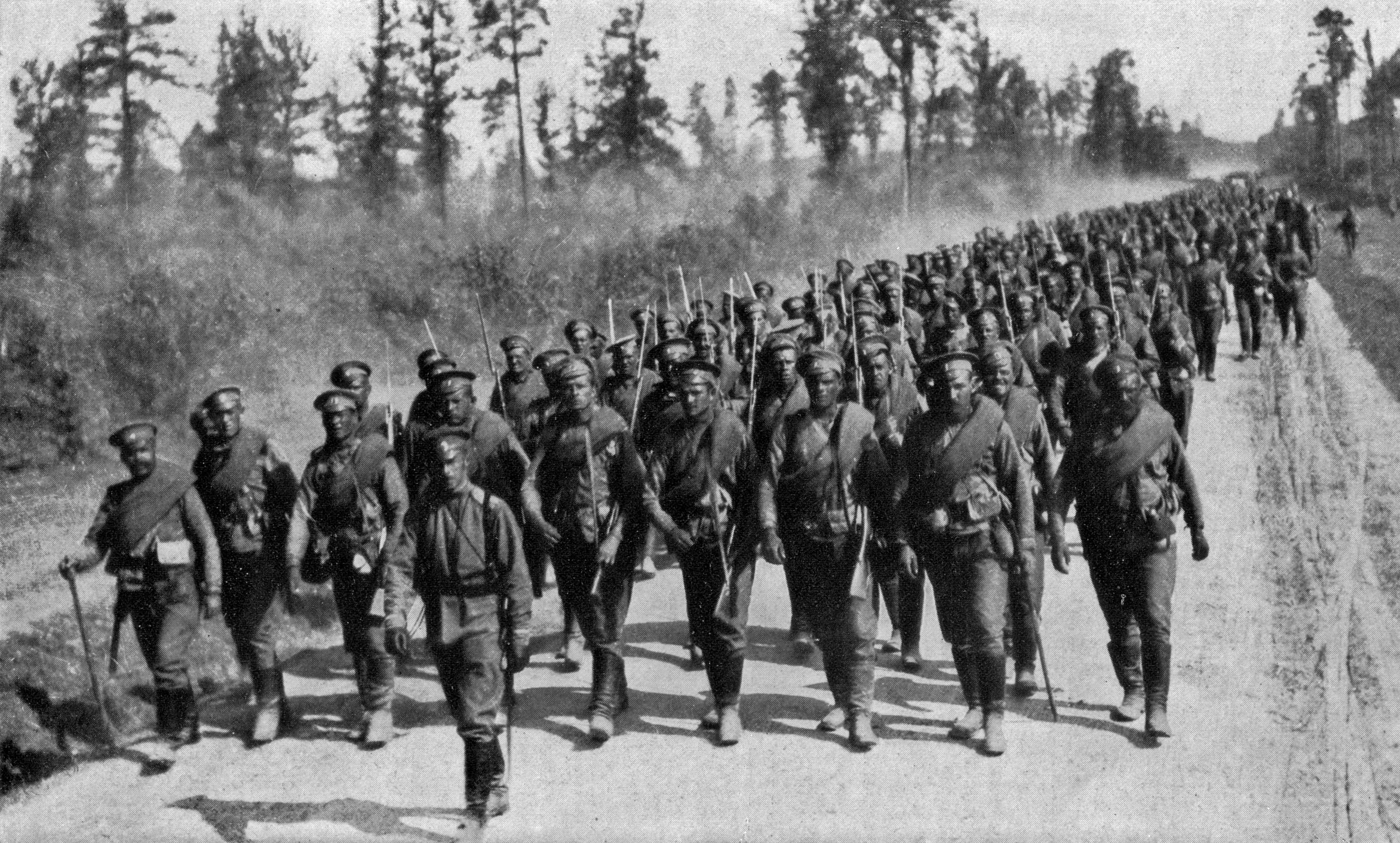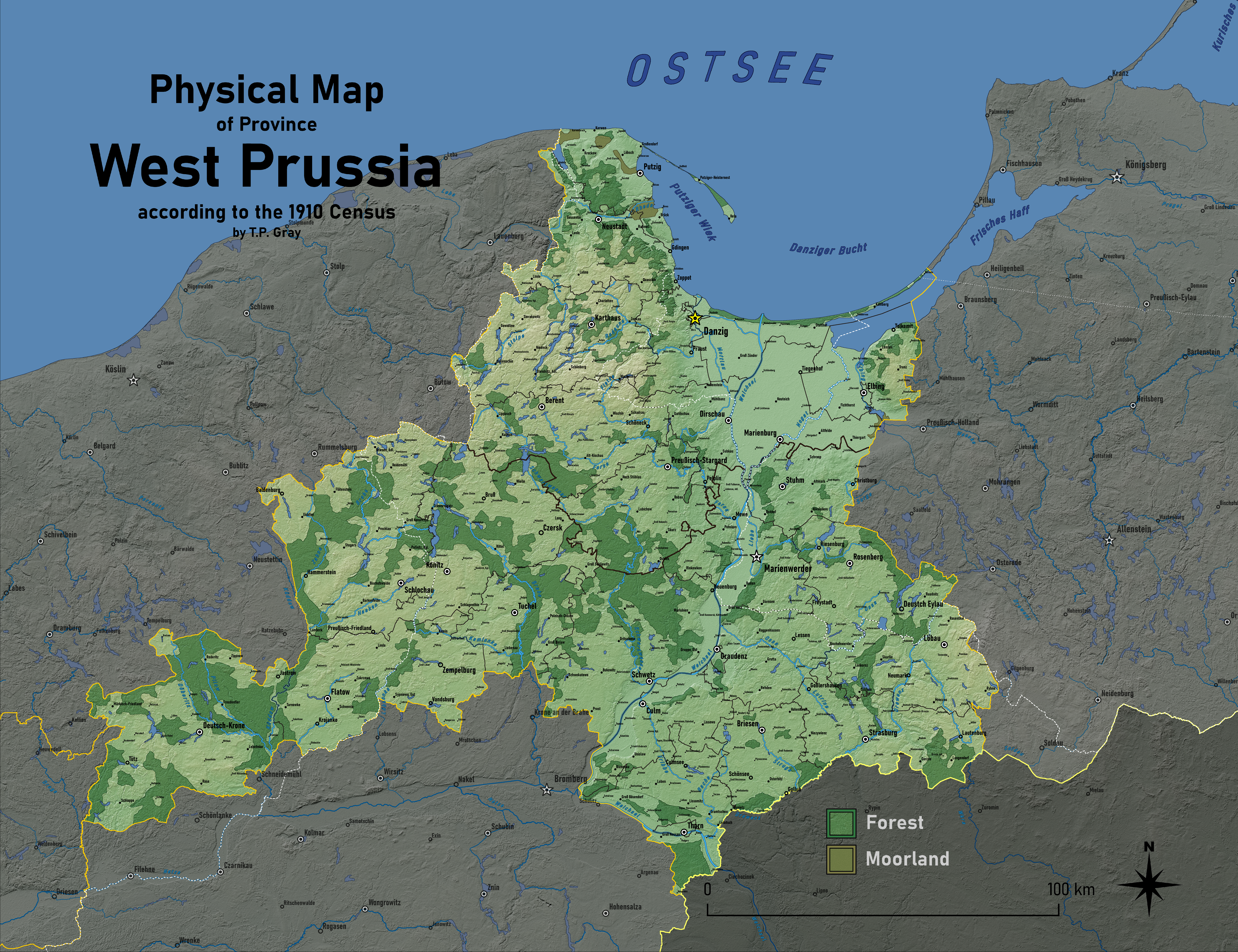|
Otto Parschau
''Leutnant'' Otto Parschau (11 November 1890 – 21 July 1916) was a German World War I flying ace and recipient of the Pour le Mérite, Royal House Order of Hohenzollern, and Iron Cross, First Class. He was noted as one of the pre-eminent aces on the Fokker Eindecker. He was one of the world's first flying aces. Parschau and ''Leutnant'' Kurt Wintgens were the pilots chosen to fly the prototype of the revolutionary Fokker Eindecker fighter plane with a machine gun synchronized to fire safely through its propeller arc via use of a gun synchronizer. Background Parschau was born in Klausen (now Klutznick, Poland), in the Allenstein district of East Prussia. He became a commissioned officer a year after having joined the ''Infanterie-Regiment Nr. 151'' in 1910. Parschau was trained as a pilot in Johannisthal, Darmstadt, and in Hanover and received his licence on 4 July 1913. World War I Upon the outbreak of hostilities in August 1914 Parschau was already serving with the ' ... [...More Info...] [...Related Items...] OR: [Wikipedia] [Google] [Baidu] |
Pour Le Mérite
The (; , ), also informally known as the ''Blue Max'' () after German WWI flying ace Max Immelmann, is an order of merit established in 1740 by King Frederick II of Prussia. Separated into two classes, each with their own designs, the was awarded as both a military and civil honour. While the military class has been extinct since the abolition of the German Monarchy, the civil honour continues to be awarded by the German state at the oversight of the Minister of State for Culture and discretion of the Federal President. Alongside the extinct Order of the Black Eagle, Order of the Red Eagle, and the House Order of Hohenzollern, the award was one of the Kingdom of Prussia's most significant, with the ''Pour le Mérite'' itself being the highest order of bravery for officers of all ranks, and the highest recognition of civilian accomplishment awarded by the Prussian Crown. The was awarded as a recognition of extraordinary personal achievement, rather than as a genera ... [...More Info...] [...Related Items...] OR: [Wikipedia] [Google] [Baidu] |
Hanover
Hanover ( ; ; ) is the capital and largest city of the States of Germany, German state of Lower Saxony. Its population of 535,932 (2021) makes it the List of cities in Germany by population, 13th-largest city in Germany as well as the fourth-largest in northern Germany after Berlin, Hamburg and Bremen. Hanover's urban area comprises the towns of Garbsen, Langenhagen and Laatzen and has a population of about 791,000 (2018). The Hanover Region has approximately 1.16 million inhabitants (2019) and is the largest in the Hannover–Braunschweig–Göttingen–Wolfsburg Metropolitan Region, Hanover–Braunschweig–Göttingen–Wolfsburg Metropolitan Region, the List of EU metropolitan areas by GDP, 17th biggest metropolitan area by GDP in the European Union. Before it became the capital of Lower Saxony in 1946, Hanover was the capital of the Principality of Calenberg (1636–1692), the Electorate of Hanover (1692–1814), the Kingdom of Hanover (1814–1866), the Province of Hannove ... [...More Info...] [...Related Items...] OR: [Wikipedia] [Google] [Baidu] |
Oberste Heeresleitung
The ''Oberste Heeresleitung'' (, "Supreme Army Command", OHL) was the highest echelon of command of the army (''Heer'') of the German Empire. In the latter part of World War I, the Third OHL assumed dictatorial powers and became the ''de facto'' political authority in the Empire. Formation and operation After the formation of the German Empire in 1871, the Prussian Army, Royal Saxon Army, Army of Württemberg and the Bavarian Army were autonomous in peacetime, each kingdom maintaining a separate war ministry and general staff to administer their forces. On the outbreak of war, the Constitution of the German Empire made the German Emperor commander-in-chief of the combined armies (''Oberster Kriegsherr'', "supreme warlord"). The Emperor's role as commander-in-chief was largely ceremonial and authority lay with the Chief of the German General Staff, who issued orders in the Emperor's name. The pre-war Chief of the General Staff was Colonel General Helmuth von Moltke and the ' ... [...More Info...] [...Related Items...] OR: [Wikipedia] [Google] [Baidu] |
Marburg
Marburg (; ) is a college town, university town in the States of Germany, German federal state () of Hesse, capital of the Marburg-Biedenkopf Districts of Germany, district (). The town area spreads along the valley of the river Lahn and has a population of approximately 76,000. Having been awarded town privileges in 1222, Marburg served as capital of the Landgrave, landgraviate of Hessen-Marburg during periods of the 15th to 17th centuries. The University of Marburg was founded in 1527 and dominates the public life in the town to this day. Marburg is a historic centre of the pharmaceutical industry in Germany, and there is a plant in the town (by BioNTech) to produce vaccines to tackle Covid-19. History Founding and early history Like many settlements, Marburg developed at the crossroads of two important early medieval highways: the trade route linking Cologne and Prague and the trade route from the North Sea to the Alps and on to Italy, the former crossing the river La ... [...More Info...] [...Related Items...] OR: [Wikipedia] [Google] [Baidu] |
German Army (German Empire)
The Imperial German Army (1871–1919), officially referred to as the German Army (), was the unified ground and air force of the German Empire. It was established in 1871 with the political unification of Germany under the leadership of Prussia, and was dissolved in 1919, after the defeat of the German Empire in World War I (1914–1918). In the Federal Republic of Germany, the term refers to the German Army, the land component of the . Formation and name The states that made up the German Empire contributed their armies; within the German Confederation, formed after the Napoleonic Wars, each state was responsible for maintaining certain units to be put at the disposal of the Confederation in case of conflict. When operating together, the units were known as the Federal Army (). The Federal Army system functioned during various conflicts of the 19th century, such as the First Schleswig War from 1848 to 1852. However, by the time of the Second Schleswig War of 1864, tensio ... [...More Info...] [...Related Items...] OR: [Wikipedia] [Google] [Baidu] |
Oberleutnant
(English: First Lieutenant) is a senior lieutenant Officer (armed forces), officer rank in the German (language), German-speaking armed forces of Germany (Bundeswehr), the Austrian Armed Forces, and the Swiss Armed Forces. In Austria, ''Oberleutnant'' is also a designation for certain positions in the federal police and prison guards. In the former West Germany, it was also a rank in the Federal Border Guard (''Bundesgrenzschutz''). Occupied Austria Germany In the German Army, it dates from the early 19th century. Translated as "first lieutenant", the rank is typically bestowed upon commissioned officers after five to six years of active-duty service. is used by both the German Army and the German Air Force. In the NATO military comparison system, a German is the equivalent of a first lieutenant in the Army/Air Forces of Allied nations. ;Other uses The equivalent naval rank is ''Oberleutnant zur See''. In Nazi Germany, within the SS, Sturmabteilung, SA and Waffen-SS, ... [...More Info...] [...Related Items...] OR: [Wikipedia] [Google] [Baidu] |
Idflieg
The Idflieg (''Inspektion der Fliegertruppen'' - "Inspectorate of Flying Troops") was the bureau of the German Empire that oversaw German military aviation prior to and during World War I. Founded in 1911, the Idflieg was part of the ''Fliegertruppen des deutschen Kaiserreiches'' (Imperial German Flying Corps) which became the ''Luftstreitkräfte'' in 1916, handling administration, including regulation of service names applied to aircraft produced by domestic companies, characterised according to the armament, wing configuration, crew and role which was intended for the aircraft. Inspectors of Flying Troops * Colonel Walter von Eberhardt (1913–1914) * Major Richard Roethe (1914–1916) * Major, later Lieutenant-Colonel Wilhelm Siegert (1916–1918) * Captain Wilhelm Haehnelt (1918–1919) See also * Idflieg aircraft designation system The '' Idflieg'' (Inspektion der Fliegertruppen/Inspectorate of Flying Troops) designation system was used to classify German heavier-th ... [...More Info...] [...Related Items...] OR: [Wikipedia] [Google] [Baidu] |
Fokker Eindecker
The Fokker ''Eindecker'' fighters were a series of German World War I monoplane single-seat fighter aircraft designed by Netherlands, Dutch engineer Anthony Fokker.Boyne 1988 Developed in April 1915, the first ''Eindecker'' ("Monoplane") was the first purpose-built German fighter aircraft and the first aircraft to be fitted with a synchronization gear, enabling the pilot to fire a machine gun through the arc of the Propeller (aircraft), propeller without striking the blades. The ''Eindecker'' gave the German Army's Air Service Luftstreitkräfte, (then the ''Fliegertruppen des deutschen Kaiserreiches'') a degree of air superiority from July 1915 until early 1916. This period, during which Allied aviators regarded their poorly armed aircraft as "Fokker Fodder", became known as the "Fokker Scourge". Design and development The ''Eindecker'' was based on Fokker's unarmed Fokker M.5K scout (aircraft), scout (military designation Fokker A.III) which in turn was based on the design of t ... [...More Info...] [...Related Items...] OR: [Wikipedia] [Google] [Baidu] |
Otto Parschau's A-16-15 Eindecker
Otto is a masculine German given name and a surname. It originates as an Old High German short form (variants '' Audo'', '' Odo'', '' Udo'') of Germanic names beginning in ''aud-'', an element meaning "wealth, prosperity". The name is recorded from the 7th century ( Odo, son of Uro, courtier of Sigebert III). It was the name of three 10th-century German kings, the first of whom was Otto I the Great, the first Holy Roman Emperor, founder of the Ottonian dynasty. The Gothic form of the prefix was ''auda-'' (as in e.g. '' Audaþius''), the Anglo-Saxon form was ''ead-'' (as in e.g. '' Eadmund''), and the Old Norse form was '' auð-''. Due to Otto von Bismarck, the given name ''Otto'' was strongly associated with the German Empire in the later 19th century. It was comparatively frequently given in the United States (presumably in German American families) during the 1880s to 1890s, remaining in the top 100 most popular masculine given names in the US throughout 1880–1898, but it ... [...More Info...] [...Related Items...] OR: [Wikipedia] [Google] [Baidu] |
Eastern Front (World War I)
The Eastern Front or Eastern Theater, of World War I, was a theater (warfare), theater of operations that encompassed at its greatest extent the entire frontier between Russian Empire, Russia and Kingdom of Romania, Romania on one side and Austria-Hungary, Kingdom of Bulgaria, Bulgaria, the Ottoman Empire, and German Empire, Germany on the other. It ranged from the Baltic Sea in the north to the Black Sea in the south, involved most of Eastern Europe, and stretched deep into Central Europe. The term contrasts with the Western Front (World War I), Western Front, which was being fought in Belgium and French Third Republic, France. Unlike the static warfare on the Western Front, the fighting on the geographically larger Eastern Front was maneuver warfare, more dynamic, often involving the flanking and encirclement of entire formations, and resulted in over 100,000 square miles of territory becoming occupied by a foreign power. At the start of the war Russia launched offensives agai ... [...More Info...] [...Related Items...] OR: [Wikipedia] [Google] [Baidu] |
Kingdom Of Galicia And Lodomeria
The Kingdom of Galicia and Lodomeria, also known as Austrian Galicia or colloquially Austrian Poland, was a constituent possession of the Habsburg monarchy in the historical region of Galicia (Eastern Europe), Galicia in Eastern Europe. The Crown land#Austria, crown land was established in 1772. The lands were annexed from the Polish-Lithuanian Commonwealth as part of the First Partition of Poland. In 1804 it became a crown land of the newly proclaimed Austrian Empire. From 1867 it was a crown land within the Cisleithanian or Austrian half of the dual monarchy of Austria-Hungary. It maintained a degree of provincial autonomy. Its status remained unchanged until the Dissolution of Austria-Hungary, dissolution of the monarchy in 1918. The domain was initially carved in 1772 from the southwestern part of the Polish–Lithuanian Commonwealth. During the following period, several territorial changes occurred. In 1795 the Habsburg monarchy participated in the Third Partition of Polan ... [...More Info...] [...Related Items...] OR: [Wikipedia] [Google] [Baidu] |
West Prussia
The Province of West Prussia (; ; ) was a province of Prussia from 1773 to 1829 and from 1878 to 1919. West Prussia was established as a province of the Kingdom of Prussia in 1773, formed from Royal Prussia of the Polish–Lithuanian Commonwealth annexed in the First Partition of Poland. West Prussia was dissolved in 1829 and merged with East Prussia to form the Province of Prussia, but was re-established in 1878 when the merger was reversed and became part of the German Empire. From 1918, West Prussia was a province of the Free State of Prussia within Weimar Germany, losing most of its territory to the Second Polish Republic and the Free City of Danzig in the Treaty of Versailles. West Prussia was dissolved in 1919, and its remaining western territory was merged with Posen to form Posen-West Prussia, and its eastern territory merged with East Prussia as the Region of West Prussia district. West Prussia's provincial capital alternated between Marienwerder (present-day Kwid ... [...More Info...] [...Related Items...] OR: [Wikipedia] [Google] [Baidu] |



